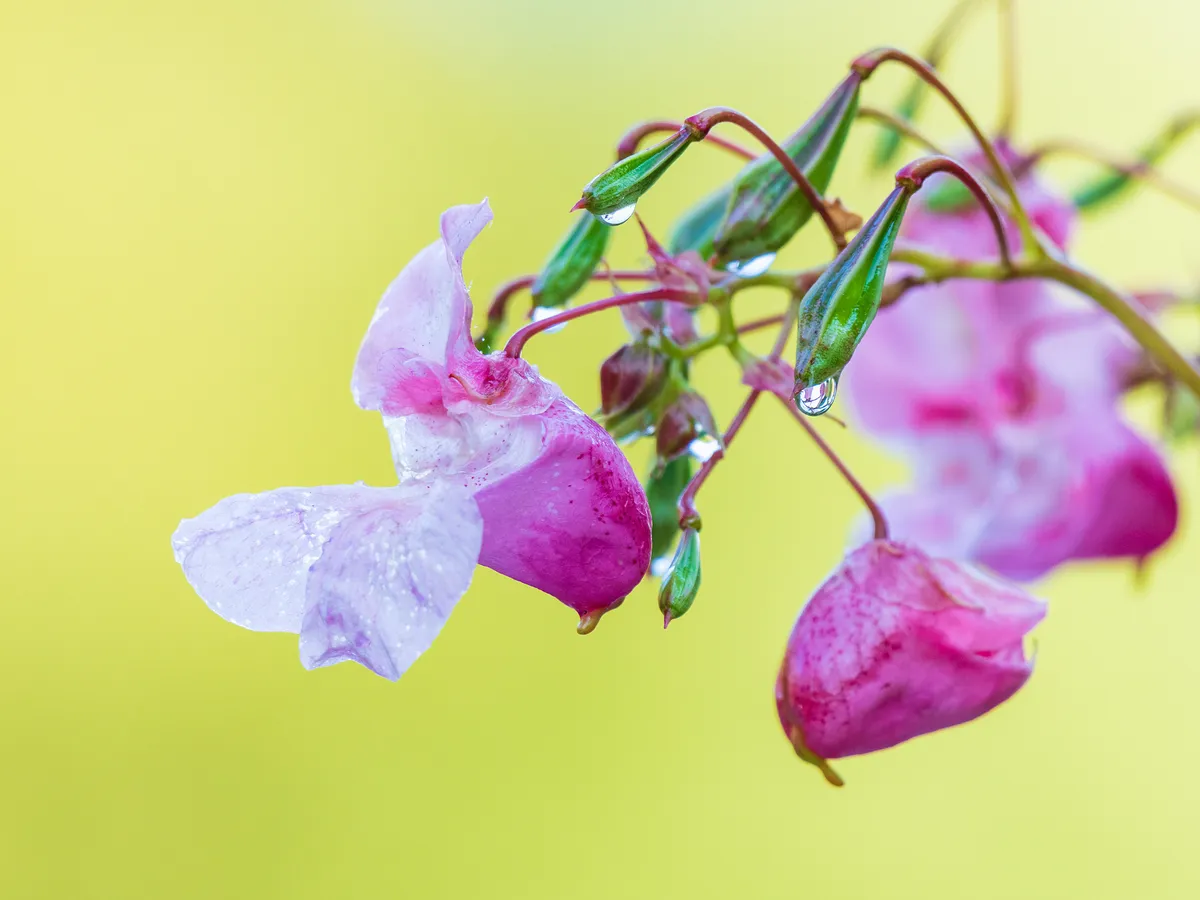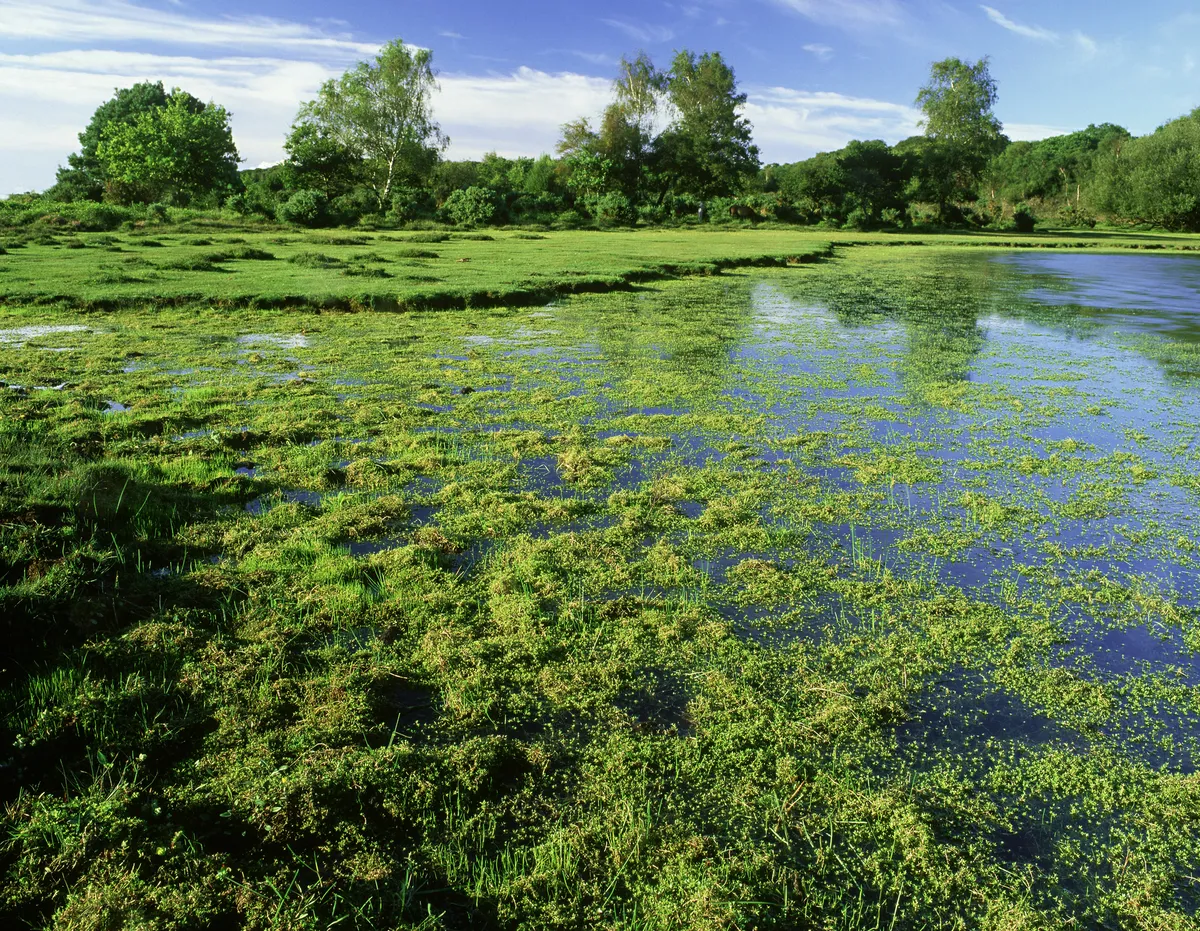The introduction of non-native plants to the UK can sometimes be harmless, and many still brighten gardens quite happily. However, some have taken to their new home rather too well and there are number of a species that, with no natural enemies to keep them in check, are ruthless competitors and smother our native plant life.
The options for controlling invasive non-native plants are limited. Physically shifting some species, such as Himalayan balsam, on any scale requires vast numbers of people, and it often grows in such difficult to access places that removal is simply not feasible.
Chemical ‘enemies’ we might want to use are severely restricted throughout Europe. There is only one herbicide, glyphosate, that can be used near water, and the fate of that is under review.
How is biocontrol used for invasive non-native plants?
There is, however, a third method – biocontrol. This means introducing the natural enemies of an invasive species, which co-evolved with it in its home range, into the new environment already colonised. The perfect agent will have evolved so closely with the invader that it poses minimal threat to native species. The aim is not eradication, but control.
The approach has its critics. Science journalist Fred Pearce argues in his book The New Wild that we should learn to accept invasive species as a consequence of the modern world we live in. A new plant and animal community will be created in time – we should stop trying to wage a war against the aliens.
According to Richard Shaw, country director at the Centre of Agriculture and Bioscience International (CABI), something may indeed evolve to keep the numbers of these invaders in check, but it may take thousands of years – we just don’t know. What about the damage they are doing in the meantime, not least to our native biodiversity?
Invasive plants in the UK
Himalayan balsam (Fallopia japonica)

Since its arrival in the 1800s, Himalayan balsam has taken over many a riverbank in the UK. It grows in small clusters, and with its delicate, pink orchid-like blooms, it is easy to see why it appealed to Victorian collectors. It has been released many times across the UK since its arrival, not least by beekeepers as a source of nectar.
Its very shallow roots can cause a problem in riverine habitats. They fail to bind the riverbanks. which makes the bare soil prone to erosion in winter spates, when the plant dies back.
The agent: Many bioagents have been discounted, but one, a rust fungus in the Indian Himalayas, was observed to have significant impacts on its balsam host. In 2010, it was brought to CABI’s UK lab for quarantined tests. Results were slow, and the scientists delved deeper, carrying out molecular analysis on 100-year-old samples of Himalayan balsam at Kew.
They now think that the plant has made three separate arrivals to the UK, from three different regions of the Himalayas – Pakistan, India and possibly western Nepal. There are now, therefore, at least three different forms, known as biotypes, established in Britain.
They also discovered that rust fungi have co-evolved so closely with balsam that they will preferentially attack plants from their own region. Since the strain of fungus introduced hailed from the Indian Himalayas, only those plants originating from that same home range were affected, which explains those early, disappointing results. The theory was proved when a second strain of rust fungus, this time from Pakistan, was released, and found to infect a different cohort of balsam in a different region of the UK.
Effectively controlling balsam therefore depends on matching the rust fungus to the strain of balsam with which it co- evolved, from the geographical region it is found.
Japanese knotweed (Fallopia japonica)

Japanese knotweed is highly invasive and causes extensive damage to buildings - mortgages can be refused if it is present around a property.
Native to Japan, China, Taiwan and the Korean peninsula, it was introduced into the UK as an ornamental plant in 1850. Despite its prolific spread, Japanese knotweed does not reproduce sexually; it spreads vegetatively, effectively cloning. The plants in the UK are female with sterile male flowers.
The agent: CABI are undergoing field trials with a psyllid (a tiny insect known as plant louse) as a biocontrol agent. They are also developing a mycoherbicide (fungal mycelia sprayed onto plant).
Crassula (Crassula helmsii)

Also known as the Australian swamp stonecrop, Crassula is native to Australia and New Zealand.
It was introduced into the UK during the early 1900s as an oxygenating plant for aquariums. It was first reported in the wild in 1956 and the number of sites doubles every two years. It can take over waterbodies once established, and is particularly crafty in that it can take two forms - one above water and one below.
The agent: CABI is experimenting with an Australian gall-forming mite as a biocontrol agent, which colonises the growing shoots of the terrestrial plants. After field trials and a Government Pest Risk Analysis, the mite has now been released at five sites, and so far seems to be surviving our winters.
Floating pennywort (Hydrocotyle ranunculoides)
Native to North and South America, this was introduced into the UK as a tropical aquarium plant in the 1980s and was first recorded in the wild in 1990.
By 1996 it needed cutting on the River Wey to maintain navigation. There are now more than 1,500 known sites of infestation in England and Wales.
The agent: Trials are underway using the weevil Listronotus elongatus as a biocontrol agent. CABI are currently seeking out weevils from Argentina and Paraguay and a Pest Risk Assessment is in progress before the next stage of field trials can begin.
Giant hogweed (Heracleum mantegazzianum)

Giant hogweed is unmistakable when it has grown to its full, imposing height and its dense stands can take over riverbanks, such as those of the River Irwell around Manchester.
It can grow up to 5m high, with flower umbels up to 50cm in diameter. The plant is native to Russia and Georgia, and was introduced into the UK as a garden ornamental in the early 1800s. The plant produces a chemical that can cause serious burns if it comes into contact with skin.
The agent: A biocontrol project with a fungus ended because the fungus also attacked wild parsnip. Intensive grazing by sheep has proven to be effective, and is currently being trialled by the Tees Rivers Trust.
Main image: Himalayan balsam in flower in Germany. © Getty
